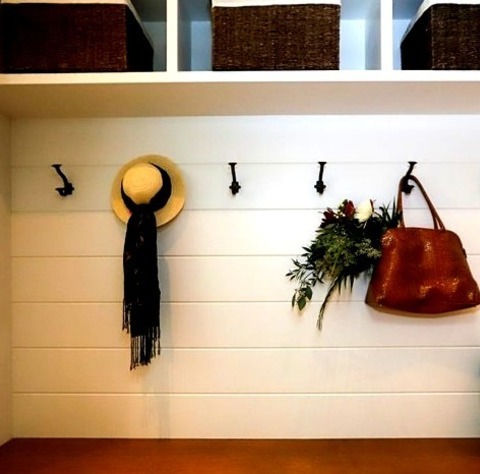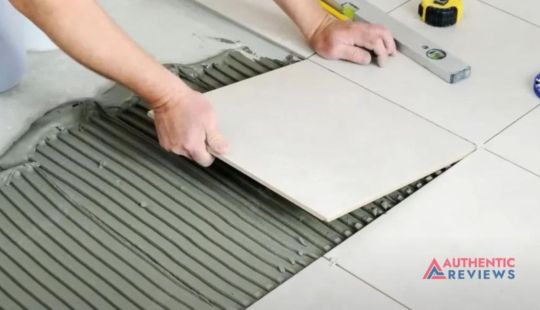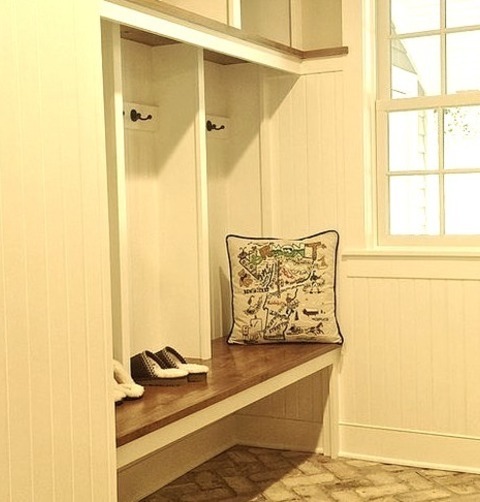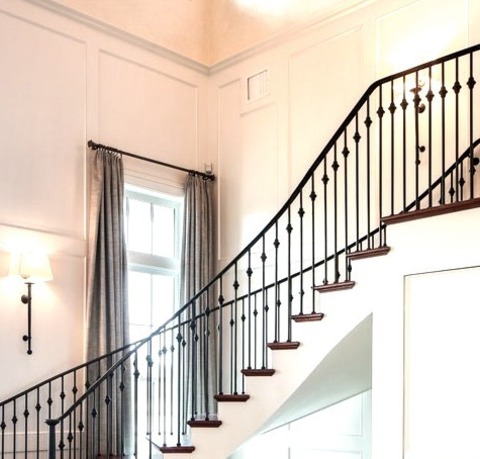#transitional mudroom ideas
Explore tagged Tumblr posts
Photo

Mudroom Mudroom DC Metro Example of a mid-sized transitional vinyl floor entryway design with gray walls and a white front door
#transitional mudroom ideas#built in mudroom storage#mudroom storage#white cubby storage#white mudroom ideas#mudroom cabinets#white and gray mudroom
0 notes
Photo

Farmhouse Entry Chicago Mid-sized country porcelain tile and brown floor entryway photo with gray walls and a white front door
1 note
·
View note
Photo

Mudroom Mudroom Mudroom - mid-sized transitional ceramic tile mudroom idea with white walls
#recessed panel cabinet#black area rug#white side table#blue red accents#patterned area rug#owl decoration ideas#under bench storage
2 notes
·
View notes
Photo

Foyer Mudroom in Boise Entryway - large transitional light wood floor entryway idea with blue walls and a blue front door
2 notes
·
View notes
Photo

Mudroom - Transitional Entry ideas for a sizable transitional ceramic tile entryway remodel with a white floor, gray walls, and a white front door
#декоратор Москва#дизайн холла#донской олимп#mudroom#современный интерьер#дизайнерский ремонт квартиры
2 notes
·
View notes
Photo

Front Door Mudroom Entryway - large transitional entryway idea with a glass front door
2 notes
·
View notes
Photo

Mudroom - Transitional Entry Mudroom - small transitional travertine floor, beige floor and shiplap wall mudroom idea with white walls
3 notes
·
View notes
Text
Unlocking The Charm Of Barndominiums: Best Plans To Inspire Your Next Build
Are you dreaming of a home that harmonizes rustic charm with modern living? Barndominiums might be the answer to your vision. These unique structures blend a barn's sturdy essence with the comforts of home, creating an inviting space filled with character. Imagine wide-open spaces, high ceilings, and stunning design elements catering to functionality and style.
Condominiums are capturing hearts nationwide as more people turn towards unconventional living solutions. Whether you are looking for a cozy retreat in the countryside or a spacious family abode, these versatile designs offer endless possibilities. Ready to explore how to make your dream barndominium come true? Dive our guide on the best barndominium plans to inspire your next build!
Benefits of Building a Barndominium
Building a barn dominium offers a wealth of benefits that appeal to various lifestyles. First, these structures are incredibly versatile. You can customize them to fit your needs, whether you are looking for an open-concept living space or dedicated areas for hobbies.
Durability is another significant advantage. Barndominiums typically use steel frames and metal siding, making them resistant to harsh weather conditions and pests. This means lower maintenance costs over time.
Energy efficiency is also noteworthy. Proper insulation and design features allow you to enjoy reduced utility bills while staying comfortable year-round.
Plus, the charm factor is hard to beat. The blend of rustic aesthetics with modern amenities creates a warm, welcoming atmosphere from the moment you step inside.
Building on rural land often provides more options for larger plots at affordable prices than traditional homes in urban settings.
Choosing the Perfect Floor Plan
Selecting the right floor plan for your barndominium can set the tone for your living experience. Think about how you want to live. Open spaces often create a welcoming vibe, perfect for family gatherings.
Consider functionality, too. Do you need a home office or a mudroom? Tailoring your layout to fit daily activities helps enhance comfort and efficiency.
Natural light plays a crucial role in design choices. Large windows not only bring in warmth but also connect indoor spaces with the beauty of nature outside.
Remember future needs. Flexibility is vital—rooms that adapt as circumstances change can be game-changers.
Always visualize how each area flows into another. Cohesive transitions make everyday life more enjoyable while adding charm to your space.
Inspiring Design Ideas for Your Barndominium
When designing your barndominium, think outside the box. Combine rustic charm with modern elegance. Exposed beams can add character, while large windows bring in natural light.
Consider an open floor plan to enhance flow and functionality. This layout creates a spacious feel, perfect for gatherings with family and friends. Incorporate high ceilings; they elevate any room's aesthetic.
Add personal touches through color choices and materials. A mix of metal accents with warm wood tones creates balance and warmth throughout the space.
Don't avoid unique features like sliding barn doors or a cozy loft area. These elements not only serve practical purposes but also infuse your home with personality.
Embrace outdoor living by including porches or patios that connect you to nature. The right design can transform your barndominium into a tranquil haven you'll love for years.
Building a Barndominium: Things to Consider
Building a barndominium is an exciting venture, but there are vital factors to remember. Start with your budget. Costs can vary significantly depending on materials, finishes, and labor.
Next, consider the location. Is the land suitable for building? Check zoning laws and utility access before proceeding.
Consider your lifestyle needs as well. How many bedrooms do you require? Will you need dedicated workspaces or extra storage?
Take into account energy efficiency, too. Choosing sustainable materials can save money in the long term while reducing environmental impact.
Allow room for future growth. Your family's needs may change over time, and flexibility in design will serve you well in the future.
Conclusion
Condominiums offer a refreshing alternative to building a dream home. They combine rustic charm with modern functionality, and their unique design and customizable floor plans make them attractive options for many.
Whether you're drawn by the spacious interiors or the potential for a self-sufficient lifestyle, embarking on this journey will be rewarding. Each step holds exciting possibilities, from selecting the proper layout to infusing personal style into your space.
As you consider making your barn dominium dreams come true, remember that planning is key. With careful thought and creativity, you can unlock the full potential of these beautiful structures. Dive into inspiration and start crafting the perfect sanctuary tailored just for you—your ideal home awaits with some of the best barn dominium plans at your fingertips.

0 notes
Text
Combine Tile and Wood Flooring in a Creative Way: A Perfect Blend for Your Home
When it comes to designing a stylish and functional home, flooring plays a crucial role. One popular trend that's gaining momentum is combining tile and wood flooring. This creative approach allows homeowners to merge the warmth of wood with the practicality of tile, creating visually stunning spaces. Whether you're looking to add texture, define spaces, or simply get creative, here's how you can combine tile and wood flooring in a way that elevates your interior design.

1. Transition Zones: Seamless Flow Between Spaces
Combining tile and wood flooring is an excellent way to create a natural transition between different areas of the home, especially in open-concept spaces. For example:
Living Room to Kitchen: Use wood flooring in the living room for warmth and comfort, then switch to durable tile in the kitchen to handle spills and stains. A subtle border or zigzag pattern between the two materials can create an artistic, seamless transition.
Hallway to Bathroom: Wood flooring is great for hallways, while tile works well in moisture-prone areas like bathrooms. Using a geometric pattern at the transition point can define the spaces without feeling abrupt.
2. Unique Patterns: Create a Visual Focal Point
If you're looking to make a bold design statement, consider integrating creative patterns where tile and wood meet. Some ideas include:
Herringbone or Chevron Pattern: Combine wood and tile in a herringbone or chevron pattern. This adds dynamic movement and texture to the floor, becoming an eye-catching feature in any room.
Hexagonal Tile Meets Wood: A current trend involves hexagonal tiles "melting" into wood planks. This organic pattern works especially well in kitchens or bathrooms, where the irregular border blurs the line between the two materials.
3. Room Zoning: Define Areas Without Walls
In open-plan homes, the challenge is often how to define different functional areas without building walls. This is where tile and wood combinations can shine. Here’s how:
Kitchen Island Zone: Use tile around the kitchen island while keeping wood flooring in the dining or living area. This helps to subtly zone off the cooking area while maintaining a cohesive design.
Entryway Definition: Install tile flooring in the entryway to withstand foot traffic and weather, then transition to wood in the living space. This offers a practical solution without sacrificing style.
4. Mixing Textures: Contrast for Visual Interest
Combining tile and wood flooring provides the opportunity to play with contrasting textures. The smooth, cool surface of tile pairs beautifully with the warm, grainy texture of wood, offering a tactile experience. Here are some effective ways to mix textures:
Smooth Tile and Rough Wood: For a modern look, choose sleek ceramic or porcelain tiles and pair them with rustic, reclaimed wood flooring. The contrast between the polished tile and the distressed wood adds depth to the space.
Matte and Glossy Finishes: Consider mixing matte-finished wood with glossy or shiny tiles. This combination creates a sophisticated contrast, adding elegance and dimension to the room.
5. Practicality Meets Aesthetics: Best Areas to Combine
While the aesthetic appeal is important, it's also essential to consider the practical side of combining tile and wood flooring. Certain rooms benefit more from this combination:
Kitchen: As a high-traffic, spill-prone area, the kitchen is the perfect place to introduce tile around cooking and sink areas while maintaining wood flooring in dining zones.
Bathrooms: Bathrooms require moisture-resistant flooring, so using wood-look tile with real wood accents in less exposed areas can achieve a warm, cohesive feel.
Mudrooms and Entryways: These areas often deal with wet shoes, dirt, and debris, making tile a practical choice. Blending it into the wood flooring of adjacent rooms helps maintain flow.
6. Choosing the Right Colors and Materials
When combining tile and wood, it’s important to choose materials and colors that complement each other. Here’s how to do it:
Similar Tones: To create a harmonious look, choose tile and wood that are in the same color family. For example, a warm oak wood can pair beautifully with beige or cream tiles.
Contrasting Colors: If you prefer contrast, make sure the colors still complement each other. Dark wood floors paired with light tiles can create a dramatic effect without feeling jarring.
Consistent Material Feel: Opt for materials that feel similar in terms of weight and tone. For example, pairing natural stone tiles with hardwood creates an earthy, organic look.
7. Grout and Finishing Touches
Finally, the choice of grout can make a significant impact when combining tile and wood flooring. Opt for grout that matches the tile to create a smooth, continuous look, or choose a contrasting grout color to highlight the tile pattern.
Additionally, ensure proper installation and transition strips where necessary to prevent uneven surfaces. A professional installer can help seamlessly blend the two materials, avoiding gaps and height differences.
Conclusion
Combining tile and wood flooring is not only functional but also a highly creative way to elevate your home's interior design. By thoughtfully integrating these materials, you can create stunning transitions, define open spaces, and add visual intrigue. Whether you choose a subtle blend or a bold contrast, this design approach is sure to leave a lasting impression.
0 notes
Text
Hills District Serenity Starts Here: Designing a Mudroom & Boot Room with First Floor Additions Hills District Sydney
Living in the picturesque Hills District of Sydney comes with its perks – fresh air, scenic landscapes, and the joy of exploring the outdoors. But with all that adventuring comes a challenge: managing the mess that often follows. Traditionally sized Hills District homes can quickly become cluttered with muddy boots, wet jackets, and sports equipment. Craving a solution to maintain a clean and organized home environment? Look no further than a mudroom and boot room, seamlessly integrated into your living space with a First Floor Additions Hills District Sydney project.
The Importance of Mudrooms & Boot Rooms
Mudrooms and boot rooms serve a critical purpose, acting as a buffer zone between the outdoors and your clean living space. These dedicated areas provide a place to shed dirty clothes, store outdoor gear, and contain mess before it enters the rest of your home.
Challenges of Traditional Hills District Homes
Many Hills District homes lack dedicated mudroom or boot room spaces. Limited square footage often forces residents to improvise, leading to cluttered entryways or overflowing garages. This can be frustrating and create a constant battle to maintain order.
First Floor Additions Hills District Sydney: A Solution for Organization
First Floor Additions Hills District Sydney specialists offer an ingenious solution – incorporate a mudroom and boot room into your new first-floor addition! This approach provides much-needed dedicated space to manage outdoor mess, creating a more organized and serene living environment for the whole family.
Benefits of Integrating a Mudroom & Boot Room with First Floor Additions Hills District Sydney
Enhanced Organization: A dedicated mudroom and boot room keeps dirty clothes, shoes, and outdoor gear contained, preventing them from spilling over into your living areas.
Improved Functionality: First Floor Additions Hills District Sydney specialists can design a mudroom and boot room with built-in storage solutions like hooks, cabinets, and cubbies, ensuring everything has its designated place.
Reduced Cleaning Time: Containing dirt and mess at the entry point minimizes the need for constant cleaning throughout the rest of your home.
Increased Value: A well-designed mudroom and boot room can add value to your Hills District property, appealing to potential buyers who appreciate functional and organized living spaces.
Designing Your Dream Mudroom & Boot Room with First Floor Additions Hills District Sydney
Here are some key considerations for creating your ideal mudroom and boot room with a First Floor Addition Hills District Sydney project:
Consultation with Architects and Builders: Partnering with experienced architects and builders specializing in First Floor Additions Hills District Sydney is crucial. They can guide you through the design process, ensuring your mudroom and boot room integrate seamlessly with the new addition and comply with council regulations.
Defining Your Needs: Consider how you and your family utilize the outdoors. Do you need ample space for storing muddy boots and sports equipment? Would a designated dog washing station be beneficial? Understanding your specific needs helps First Floor Additions Hills District Sydney professionals design a functional mudroom and boot room layout.
Strategic Location: Ideally, position your mudroom and boot room close to the entry point where you typically transition from outdoors to indoors. First Floor Additions Hills District Sydney specialists can advise on optimal placement within your new first-floor addition.
Hills District Inspiration: Mudroom & Boot Room Design Ideas
Rustic Charm: Embrace the natural beauty of the Hills District with a mudroom and boot room featuring exposed brick walls, natural wood accents, and woven baskets for storage.
Modern Minimalist Oasis: Opt for clean lines, sleek built-in cabinetry, and a neutral color palette for a modern and organized mudroom and boot room.
Functional Farmhouse Haven: Combine rustic elements like shiplap walls with practical features like a designated drying rack for wet clothes and a boot tray to capture mud and moisture.
First Floor Additions Hills District Sydney: FAQs
Q: How much additional space do I need for a mudroom and boot room?
A: The size of your mudroom and boot room depends on your specific needs and the overall footprint of your First Floor Addition Hills District Sydney project. First Floor Additions Hills District Sydney specialists can help you determine the optimal size based on your storage requirements and desired functionality. Even a compact mudroom and boot room can significantly improve organization.
Q: Can I incorporate laundry facilities into my mudroom and boot room with a First Floor Addition Hills District Sydney project?
A: Absolutely! First Floor Additions Hills District Sydney specialists can design a combined mudroom, boot room, and laundry area, creating a highly functional and convenient space. This eliminates the need to transport dirty clothes from the entry point to a separate laundry room, streamlining the cleaning process.
Q: What are some considerations for flooring in a mudroom and boot room with a First Floor Addition Hills District Sydney project?
A: Choosing a durable and easy-to-clean flooring material is crucial. First Floor Additions Hills District Sydney specialists recommend options like:
Tile: Ceramic or porcelain tile offers excellent water resistance and is easy to maintain. Consider textured tiles for added slip resistance.
Luxury Vinyl Plank (LVP): LVP offers a water-resistant and durable option that mimics the look of wood or stone.
Sealed Concrete: This option provides a modern and industrial aesthetic while being highly durable and easy to clean.
Q: How can I ensure proper ventilation in my mudroom and boot room with a First Floor Addition Hills District Sydney project?
A: Proper ventilation is essential for preventing moisture build-up and mildew growth, especially when storing wet clothes or boots. First Floor Additions Hills District Sydney specialists can incorporate various ventilation strategies:
Exhaust Fan: Installing an exhaust fan helps remove moisture and stale air from the mudroom and boot room.
Window Placement: Strategically placed windows allow for natural ventilation and air circulation.
Conclusion
Living in the Hills District shouldn't mean sacrificing a clean and organized home environment. First Floor Additions Hills District Sydney offers an innovative solution – design a dedicated mudroom and boot room as part of your first-floor addition. This creates a functional buffer zone, maximizes storage space, and keeps your living areas mess-free. By partnering with experienced First Floor Additions Hills District Sydney specialists, you can transform your new first floor addition into a haven of organization and serenity, perfectly complementing your active Hills District lifestyle.
First Floor Additions Sydney
0 notes
Photo

Burlington Mudroom Entryway - mid-sized transitional brick floor entryway idea with beige walls and a dark wood front door
0 notes
Photo

Mudroom Mudroom Mid-sized transitional mudroom design idea
0 notes
Text
Mortgages, Mudrooms, and More: The Essential Checklist for Conquering Homeownership
Welcome to the world of homeownership! Owning your own home is one of the most sensual experiences life can offer. As a writing assistant, I'm here to provide you with the ultimate guide to conquering homeownership with ease. From mortgages to mudrooms, we’ve got you covered. But before we dive into the checklist, let's talk about the importance of having a reliable real estate agent. When it comes to buying a house in California, having the right agent by your side can make all the difference. That's why we highly recommend using a reputable Real Estate Agent Directory to help you find the perfect agent for you.
Now, let's move onto the checklist!
1. Determine Your Budget: The first step in conquering homeownership is to determine your budget. This will involve assessing your income, monthly expenses, and any outstanding debts. A good rule of thumb is to aim for a mortgage payment no more than 28% of your gross monthly income.
2. Get Pre-Approved for a Mortgage: Once you've determined your budget, it's time to get pre-approved for a mortgage. This will involve submitting financial documents to a lender who will assess your creditworthiness and ability to repay the loan. Getting pre-approved will give you an idea of how much house you can afford, which will help you narrow down your search.
3. Hire a Home Inspector: Before you finalize the deal on a house, you'll want to hire a home inspector to assess the property's condition. A home inspection can uncover any potential issues with the property, such as structural problems, mold, or pest infestations. This will help you avoid any costly surprises down the road.
4. Plan for Moving Expenses: Moving can be a stressful time, but it doesn't have to be. By planning for moving expenses ahead of time, you can minimize the stress and ensure a smooth transition. Factor in costs such as hiring movers, renting a moving truck, or purchasing packing materials.
5. Consider Necessary Home Upgrades: Depending on the condition of the home you purchase, you may need to make some upgrades or renovations. It's important to factor in any necessary home upgrades into your budget and timeline. This could include projects such as a new roof, updated electrical wiring, or a redesigned mudroom.
Owning your own home is an incredibly sensual experience, but it can also be intimidating. By following this essential checklist, you can conquer homeownership with ease. And remember, don't forget to use a reputable real estate agent directory to find the perfect agent for you. Happy house hunting!

0 notes
Text
Foyer Mudroom New Orleans

Entryway - large transitional vaulted ceiling entryway idea with beige walls and a black front door
0 notes
Text
Foyer Mudroom New Orleans

Entryway - large transitional vaulted ceiling entryway idea with beige walls and a black front door
0 notes
Photo

Foyer - Mudroom Large transitional foyer design idea
0 notes